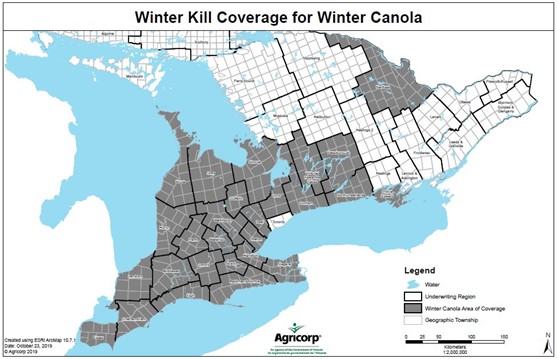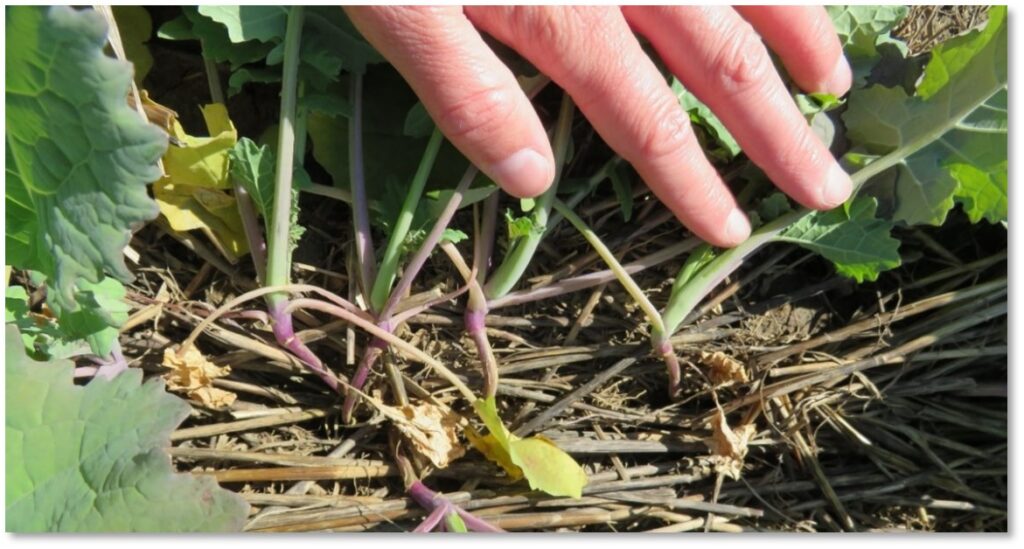There were approximately 44,750 acres of canola insured by Agricorp in 2023, which is over 20% more acres than last year. Insured acres include both winter and spring canola. Winter canola accounts for about half of the increase. Spring canola acres expanded in Temiskaming District and counties east of Toronto, compared to last year.
Spring Canola
Spring canola Growing Season
Spring canola was seeded into dry conditions and emergence was uneven. This year, late spring frosts did not occur, but some of the challenge with flea beetles in Eastern Ontario was attributed to slow growth during cool temperatures. Other regions did not report major issues with flea beetles. There was swede midge present in the traps across the province, but no significant damage caused by the insect. Reports of clubroot in northern Ontario are increasing, however the dry conditions this season likely held the clubroot back from infecting canola early in the season which helped limit yield loss.
It was drier than normal through June and early July. In northern Ontario, the canola had a long flowering window, possibly because of the uneven emergence. In canola growing areas south of Muskoka, there were few production challenges reported aside for some fields receiving hail during flowering.
Spring Canola Harvest
Producers from many of the canola-growing regions of Ontario have reported that the spring crop looked excellent this year and that yields were strong. For many, the crop was slow to dry down and harvest continued into the end of September. In northern Ontario, harvest continued well into October. Early reports from Nipissing and Temiskaming District are yields were generally above average, however dry conditions around Cochrane and Kapuskasing limited yields to average or below average. Eastern Ontario is reporting average yields after a dry summer followed by a wet August that caused some regrowth. Yield data from Agricorp is not yet available.
Winter Canola
It is estimated that winter canola was seeded on 10,000 acres or more in August and September of 2022. It is estimated that acres seeded in 2022 are double what they were the previous year.
Crop Insurance for Winter Kill
Crop insurance is available for winter canola, and includes winter kill coverage in many regions (Figure 1). Agricorp reports on insured canola acres without differentiating winter and spring canola, and because some counties are suitable for both winter and spring canola production, an exact acreage for winter canola cannot be reported using Agricorp data.

Figure 1. Areas where Agricorp offers winter kill coverage for insured winter canola (grey on map).
Tillage and Residue
Seeding winter canola in no-till fields, or fields with a lot of residue, is not recommended because there is a higher risk of winter kill and of pest issues. When canola seedlings emerge in residue, they often elongate through the residue and set the crown (growing point) above the residue rather than at the soil surface (Figure 2). When this occurs, the plants do not develop robust, thick crowns that are tucked close to the soil and well protected from the elements, which significantly increases the risk of winter kill. Additionally, canola must be seeded less than one inch deep and depth control can be challenging when seeding into residue.

Figure 2. Winter canola with plant crowns (growing points) above the wheat residue, which increases risk of winter kill.
Slugs
Slug populations tend to be higher in no-till fields, or fields where there is residue. The risk of slug damage is often underestimated, and losses are reported each year. When slugs feed on fall planted canola, the damage is generally more severe than what producers observe in corn or soybeans. Slugs love canola and they remove the cotyledons as the seedling emerges, leaving nothing but tiny stems that do not continue to grow and are difficult to see. Even in fields with residue removal and some tillage, producers have observed significant gaps in stands in the areas where chaff was not properly spread behind the combine.
Yields
The 2022 over- winter was mild and canola survival was strong compared to other years. All yield reports received this season were above the target of 3500 lb/ac (70 bu/ac) with some as high as 4500 lb/ac (90 bu/ac).
Overwintering Challenges
Some producers have reported that winter canola has been their most profitable crop in recent years. The most significant challenges aside from winter survival are:
- difficulty navigating herbicide options and herbicide carryover restrictions;
- difficulty acquiring seed – which is partly because there is only one variety available;
- harvest timing, since each year there are some growers that face the challenge of winter canola harvest overlapping with winter wheat harvest.
Seeding Dates
Producers continue to push seeding dates earlier as it has been observed that the variety Mercedes can grow quite large in fall without bolting. Late August through early September is the target seeding window. This year there was rain ahead of the seeding window which resulted in some fields being seeded late or not at all. Fields that were wet at emergence or just after are variable and have many plants that are small heading into winter. Very warm temperatures in October helped increase crop growth ahead of winter. It is estimated that 13,000 acres or more were seeded in August and September of 2023.